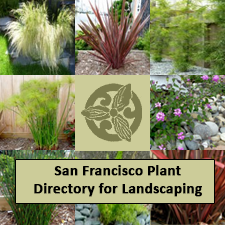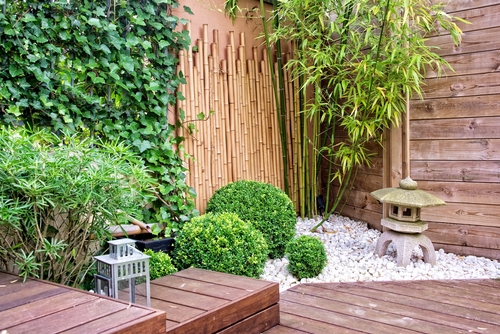Here in San Francisco, we have lots of hills, boulders, rocks; it’s all a part of the natural landscape. -And yet, not of lot of that natural landscape is incorporated into our gardens. It’s like we want to force the natural beauty of this land to transform into something else – maybe something tropical or southern. Maybe we want it to look like the vineyards of Napa Valley or something.
Yet, there’s much to be said for hills and boulders and rocks. You can do a lot with them. You can even create a Japanese Zen garden…
Japanese Garden Design: The Dry Zen Garden
When you think of “garden”, you probably picture big, green, leafy plants with bright flower petals standing proudly. The Japanese understood that there is more to life than greenery, and a place for every natural thing. Zen gardens reflect that, by reflecting nature.
Karetaki
Karetaki, literally means “dry waterfall”. Think of it as a water feature without the water. In short, you create the semblance of a waterfall with stone, sand and gravel.
Now, when I say “stone,” this could mean anything from small river rock to large boulders. What you use depends on the space available. You could even use a slate retaining wall as the backdrop and build from there.
Karenagare
Karenagare, or “raked sand”, is a common part of Zen gardens, with or without the waterfall. In a dry garden, the sand is raked to reflect the movement of water. If stones are included, the sand is raked around the stone to look like ripples in a pond. This is one of the most recognize aspects of a Zen garden, even being available in table-top miniatures with tiny rakes.
Karesansui
This brings us to Karesansui, or “rock sculptures”. Rock sculptures are stones of many sizes and shapes. Some are uniform, some are not so uniform. Whether you choose rounded, jagged, rectangular, prismatic or something else depends on the affect you’re trying to achieve and what your sculptures represent.
Pulling Your Zen Garden Together
A dry Zen garden doesn’t necessarily mean no water or greenery. Your Japanese landscape can include all three. The key is balance. When designing your Zen garden in conjunction with a water feature or green plants, consider how they should flow from one point to another.
Japanese gardens are built to be viewed from a single spot for perfection. As you pick your viewing spot, consider how your eye will move from one area to another.
Remember – Zen gardens are a reflection of nature and balance.



